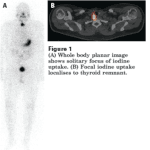Translation of PET radiotracers and innovative analysis methods to the clinic in the era of total body PET
This article provides a comprehensive overview of the evolution and future potential of PET imaging, particularly in the context of total body PET technology. PET has evolved dramatically since its inception in the 1950s, advancing from basic scanners to sophisticated total body PET systems. These innovations, alongside the development of more selective radiotracers, have significantly […]

Professor Adriana Tavares
The University of Edinburgh





